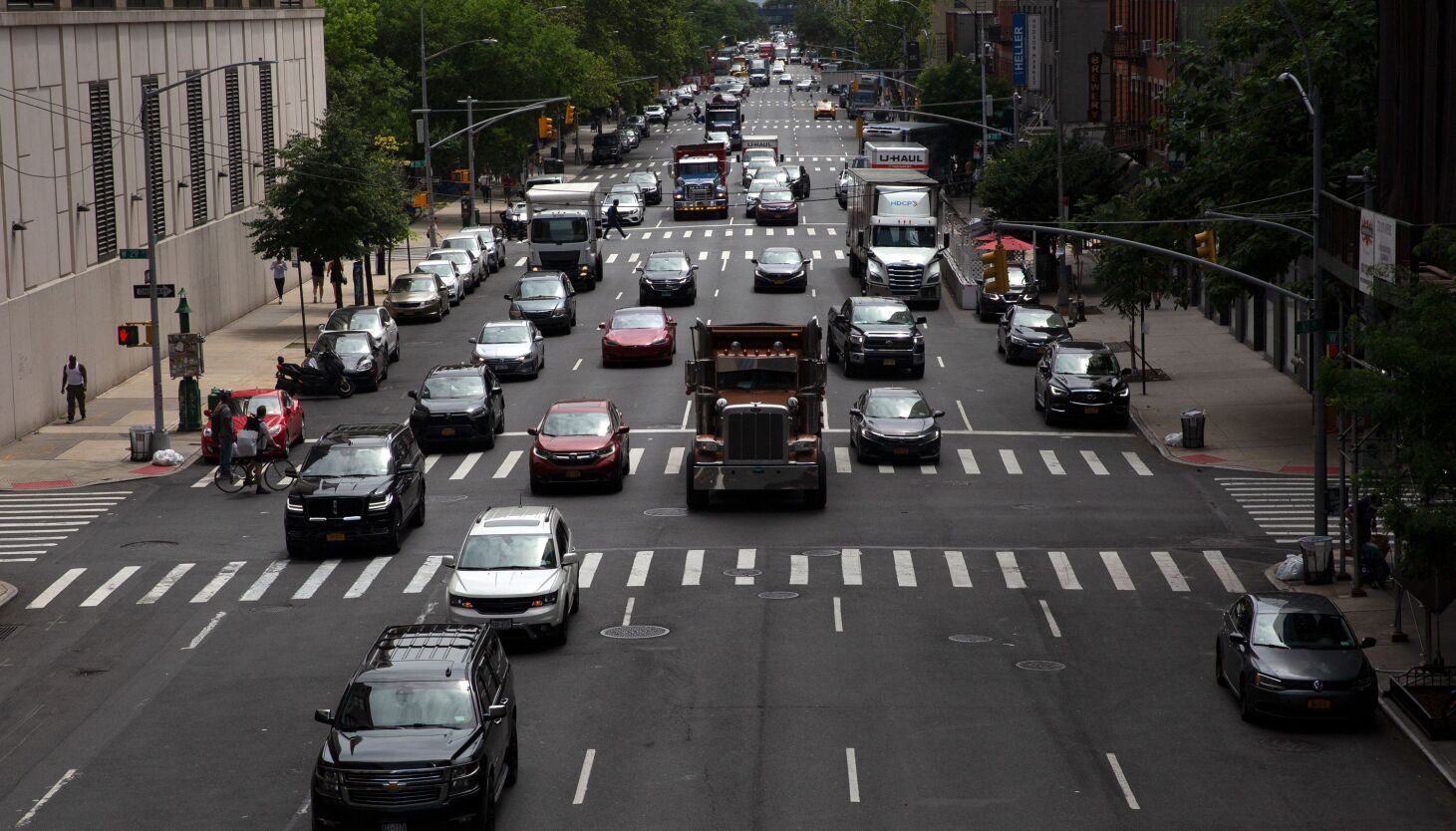For three years, New York has had ambitious goals to fight climate change but no plan for how to achieve them ahead of rapidly approaching deadlines. A key hearing on Monday decided on the roadmap of how to move forward.
The state’s Climate Action Council, or CAC, finalized its “blueprint” for achieving the mandates of the 2019 Climate Leadership and Community Protection Act, which requires a climate-neutral economy, through massive reductions in greenhouse gas emissions and the expanded use of clean energy, by 2050 and zero-emissions electricity by 2040.
“Through the actions outlined in the plan we will be able to achieve things that our parents and our grandparents never considered a possibility, a reliable energy system that is cleaner and more resilient, but also a system that doesn’t unjustly burden certain communities,” said New York State Public Service Commission Chair Rory Christian.
The sweeping plan touches on all parts of the economy: It may affect how New Yorkers heat their homes and businesses, how their energy is made and what kind of cars and other transportation options are available for commuting. It has implications for jobs and businesses that may need to support new services, as well as for those that may gradually disappear in the transition.
And it has the potential to improve air quality around the state, especially for those who live near fossil fuel infrastructure.
“Climate change has been described by the World Health Organization as the single biggest health threat facing humanity,” said Gary Ginsberg, director of the Center for Environmental Health at the state Department of Health. “[This] blueprint for action will yield air pollution reductions and health benefits.”
The real work is to come, several members of the CAC acknowledged. While the proposals are merely a guide for the state Department of Environmental Conservation under Gov. Kathy Hochul as it crafts regulations. Albany legislators may also write bills in an effort to advance specific elements of the plan — or stymie them.
“Unfortunately, we have an extraordinary amount of work ahead of us in 2023 and beyond,” said Basil Seggos, the DEC commissioner and CAC co-chair.
The Future, Etc.
Nineteen out of 22 members of the CAC — the body created by Climate Leadership and Community Protection Act (CLCPA) to determine how the state would meet its mandates — voted in favor of the plan, many invoking the futures of their kids.
“I often think of my three children when I think about this work,” said RuthAnne Visnauskas, commissioner of the state Division of Homes and Community Renewal. “Theirs will be the first generation to test whether we have stretched enough in our goals to create sustainable solutions or if we fell a little bit short.”
The members represent various sectors and include environmental lawyers and climate scientists, as well as a fossil fuel executive and a union leader, plus several officials from the Hochul administration.
A major focus of the CAC and the plan itself is how to ensure a “just” transition that directs investments and benefits to communities historically and disproportionately burdened by climate impacts.
To that end, the roadmap proposes job training and re-training members of these communities — as well as workers whose jobs could be displaced — so they participate in the emerging economy.
Those “disadvantaged” areas, however, have yet to be defined, as THE CITY has previously reported.
The blueprint proposes new energy efficiency standards for buildings, the widespread installation of electric heat pumps and other appliances, advancing transit-oriented development, and incentives for reducing reliance on gas-powered vehicles and miles driven.
It also proposes building out renewable energy generators, upgraded transmission lines and large amounts of battery storage.
“We’re talking a rough doubling of our electric load in the next number of decades to support the level of electrification necessary to reach the goals of the climate law,” Doreen Harris, president and CEO of New York State Energy Research and Development Authority (NYSERDA) and co-chair of the CAC, told THE CITY prior to the vote.
“So with that, [the plan] does definitely lay out a future in which even more solar, wind, offshore wind, etcetera, will be needed to support that buildout.”
Harris’ “etcetera” could refer to possible use of gas from biofuels, for instance, or hydrogen that could help power the grid — a point of contention between members who framed such resources as false solutions and others who see promise in them.
In the Details
The three members who voted against the plan raised concerns about costs for consumers and reliability as old power plants close down and new ones ramp up. If the Public Service Commission determines reliability is at risk, the CLCPA allows the state to readjust the energy plan even if it’s not in line with the CLCPA’s goals.
In a December 2021 draft of the plan, NYSERDA estimated achieving the greenhouse gas emission reductions required by the CLCPA could cost as much as $310 billion — with net benefits related to health and avoided emissions valued at as much as $115 billion. But there’s been no comprehensive analysis of expenses for utility customers.
“The macro analysis … is important, but that doesn’t tell people how they’re going to pay their bills,” said Gavin Donohue, president and CEO of the Independent Power Producers of New York, and one of the CAC members who voted no on the plan.
Even with widespread approval, there was still disagreement among members on specific aspects of the plan — including a proposed California-style statewide cap-and-trade program, which CAC is referring to as “cap-and-invest.”
Through this, entities would pay for carbon emissions over a certain limit and the state would use the money to pay for green energy grants and incentives.
Energy justice attorney Raya Salter criticized the “market-based” scheme; environmental justice communities have long rejected such mechanisms because they don’t necessarily lead to emissions reductions in the most impacted areas. But other members framed the cap-and-trade plan as a way to fund the transition.
“We’re going to maximize what we can from the super fantastic Inflation Reduction Act and the federal resources, but we’re also going to require the polluters to pay and contribute to the cost of the state meeting this plan,” said Anne Reynolds, executive director of the Alliance for Clean Energy New York.
As technology, the economy and climate science evolve, the state can revisit and revise the plan, which must be updated every five years.




